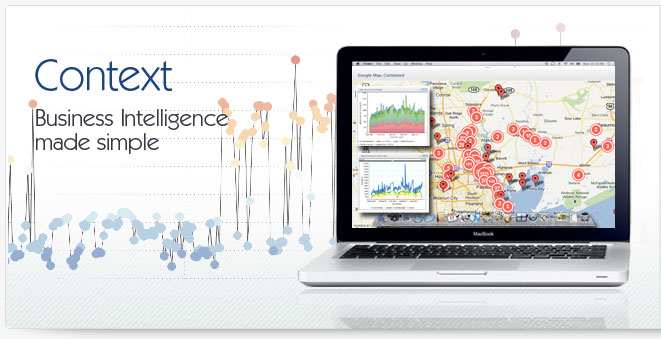Business Intelligence Software
Business intelligence software has been used to define a wide variety of applications and platforms. In fact business intelligence software often defines a group of applications and uses - rather than a specific piece of software. With business intelligence software, companies try to leverage the data that has been collected over the years to create an easy to use, easy to interact with, visual analysis model for business users. BI software then is primarily used to help business users make decisions. While this form of software application has gained a great deal of interest in the past few years, the use of business intelligence software is not new. In fact, in some form, products that allow business users to analyze, interact with and understand their data have been around since the advent of the computer itself. For the better part of its existence the business community has tried to solve the basic problem of understanding trends and making decisions based on factual information, rather than on guesses.
The Challenges of Business Intelligence Software
Business intelligence software has always allowed business people to make decisions using their collected data, thereby making the decision process faster, easier and more rooted in fact than in hope. For years the challenge of business intelligence software was that it was a costly proposition. Both in terms of initial installation and deployment, as well as in the long term, from the standpoint of cost of usage. The reasons for this are numerous, but they focus on two major areas, both related to the same challenge: business intelligence software has always relied on information that is stored in databases. Databases in use by most modern businesses are built on top of systems that use the Structured Query Language - or SQL - that were designed to provide optimal storage and retrieval of small amounts of data in one batch. For example, an accounting database might be used to store and retrieve a single invoice. Business Intelligence software, on the other hand, tries to do the opposite. It issues searches (queries) for a large volume of records in the hope of identifying useful trends.
Getting your Data to Business Intelligence Software
This seemingly opposite nature of goals and purposes is at the root of the cost problem. First, in the deployment stage, business intelligence software must somehow be able to access the data stores (the SQL databases) where the trend data is saved. At first blush this seems to be a simple issue. Just connect to the source database and begin reporting. The problem, however, is that because of the nature of SQL databases the process of issuing queries for large amounts of data can be complex and extremely time consuming. So much so, in fact, that a simple report query from a business intelligence software platform can bring an SQL server to near halt as it becomes busy finding records and computing the necessary results. To solve this problem the data warehouse was invented. A data warehouse sits between a business intelligence software platform and the data stores with a single goal: aggregate data and prepare data for the business intelligence software platform. Preparing data warehouses is expensive, extremely time intensive and has led to multi-billion dollar businesses whose only purpose is the creation and management of data warehouses.
Dirty Data and Business Intelligence Software
Long-term the conflicting goals of SQL databases and business intelligence software creates a second costly problem: As data is entered in an SQL database errors in data entry - be they inadvertent or otherwise - create a problem of data pollution. When viewing data in small segments (say one invoice at a time), the human brain easily and quickly "filters" the data that is not relevant on the fly and helps us make sense of relevant information. A business intelligence software platform, on the other hand, aggregates data based on hundreds, thousands, often millions of rows of data, making the task of visually discerning "clean" from "dirty" data nearly impossible.
New Trends in Business Intelligence Software
The business intelligence software industry has been working for years to try to solve both of these fundamental problems. New technologies like in-memory caching are being coupled with rediscovered ones like columnar databases to help solve the challenge of performance. As companies continue to grow the volume of data they store, using new and improved data caching and storage methods is a critical aspect of any business intelligence software implementation. The problem of solving "dirty data," however, is not as simple. Data cleansing and filtering tools help, but frequently the challenge of cleaning your data is one that must be solved before the data ever reaches the business intelligence software platform. As the industry continues to evolve we will have to address both challenges in seamless ways to help business users make the most use of their available data.
|



